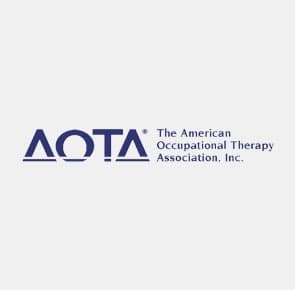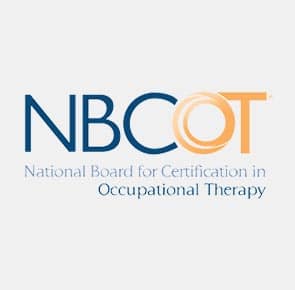Get Matched With Occupational Therapy Colleges
What Does an Occupational Therapy Assistant Career Entail?
In your professional career, you’re going to start out helping an occupational therapist with full, professional licensure, where you will help motivate and guide patients through their prescribed activities. You’ll take measure of their progress, see how much they have improved in their Activities of Daily Living (ADLs) and make continue working on the treatment plan as written. You’ll be helping your patients to recover their ability to move, eat, swallow, drive, find transportation, and overall make improvements to how they adjust to their disability.
Successful completion of an occupational therapy program is likely to require a full-time commitment to occupational therapy education, including sessions on campus and fieldwork assignments. Your classes on campus will cover a variety of subjects in allied health sciences as well as general education. Your fieldwork placements will provide you with clinical field experience and other requirements for occupational therapy licensure. In order to become an entry-level occupational therapist, you must complete a state university or college bachelor's program that offers certification in occupational therapy. This occupational therapy program must be accredited by the American Occupational Therapy Association (AOTA) or the Accreditation Council for Occupational Therapy (ACOTE). To move your career as an occupational therapist forward past the entry level, you may complete a Master of Occupational Therapy degree. This will let you sit for the Occupational Therapy Registered exam, offered by the National Board for Certification in Occupational Therapy, and gain even greater professional licensure in the field upon successful completion of the test.

Components of a Successful Occupational Therapy Assistant Career
As an occupational therapist, your biggest and most important daily goal will be to help your patients to regain independence by using special equipment and exercises. As a certified occupational therapy assistant (COTA), you'll have joined an allied health sciences field at the entry-level that is needed more and more every day. Your patients may be recovering from an illness that affected their ability to move, walk, or eat, or they may have been in an accident. Working with them, you’ll help them regain independence.
Compare Popular Online Occupational Therapy Programs
How to Become an Online Occupational Therapy Assistant
What Does an Occupational Therapy Assistant Do?

Once the OT has written out treatment plans, you’ll carry them out, teaching your patients how to work with the new challenges. You’ll work with older patients with dementia, children, youth, disabled individuals, patients suffering from health conditions, and individuals with mental disabilities.
Typical OT Assistant Trade School Requirements
Before you begin your OGA program, you will be required to have a high school diploma or GED. If you have already been enrolled into a trade school, you should have no more than 18 semester hours of college coursework from a different trade school once you graduated from high school.
Certifications Needed
You can’t work as an OTA without a certification in an OTA program. You’re likely to earn an online associate of applied science or AAS degree. Both of these will open the door for you to take a certification exam so you can begin working in your field.
Academic Standards
Before you begin taking your actual OTA core classes, you should get your prerequisites out of the way. These are the general education courses you need; they will count toward graduation.
Once you begin taking the core classes in your major, you’ll need to maintain a particular GPA, decided by your educational institution. You’ll also be required to take your clinicals, which teach and test your actual practical skills.
Exam and Experience Needed

Your fieldwork (clinicals) will give you the professional experience you need to begin working as an OTA. Look for a trade school OTA program that exposes you to both observation and direct patient experience. You’ll be placed in one of several on-the-job training settings.
Find Your Online Occupational Therapy School
Occupational Therapy Assistant Degree and Certification Options
- Gerontology:
As an occupational therapy assistant, you may choose to work with the elderly. As this population ages, painful conditions or even dementia develop, requiring them to undergo OT. You’ll help your patient to regain or maintain a level of independence that may allow them to continue living at home. If they have suffered a stroke or have been diagnosed with dementia, teaching them how to groom themselves or cook simple meals may allow them to stay out of a long-term care facility. You may also teach your patient how to safely use a walker or wheelchair. - Mental Health:
If you opt to work within a mental health facility, you may teach your patients about how to find a job once they are discharged. If their mental illness has prevented them from maintaining control over their emotions, you may be able to teach them to create a routine that helps them to keep that control. Or you could teach your patients how to take care of themselves so that, once they go back home, they’ll be more independent. Inside a mental health facility, you’ll find yourself working with individuals of all ages, from adolescents to senior citizens. - Pediatrics:
Maybe you prefer working with children or in a school setting. If you choose to work within a school system, you’ll work during the times that schools are in session. Your working hours may be from 8 a.m. to 3 or 4 p.m. Your patients may struggle with fine-motor skills and need help with handwriting. Or you may work with children who suffer from other disabilities that make everyday movement and activities difficult. Expect to have patients with autism. Living on the autism spectrum disorder means the child may have sensitivity issues which you’ll help them deal with. - Physical Rehabilitation:
If one of your patients has had a stroke, you may be responsible for helping them with physical rehabilitation; relearning activities such as walking, for instance. You could also help them relearn their activities of daily living (ADLs). You’ll help them to learn how to get out of bed, bush their teeth, comb their hair, get dressed and possibly self-transfer to a wheelchair. Once your patient has recovered, they will be able to return home and live more independently. - Driving and Community Mobility:
You’ll teach patients to begin driving again. If their injury or healthcare condition allows for this level of activity, you will enable them to regain true independence. If they can’t resume driving, they may be able to use public transportation. It will be your role to teach them how to manage sensory, mental, or physical functions so they can learn bus routes. Even if they can’t safely resume driving, learning bus schedules and how to board a bus and get off at the right stop will restore some independence so they can work or take themselves to appointments or activities. - Environmental Modification:
You may be required to help your patient modify their living environment so that, when they go home, they can safely navigate around their home and accomplish their ADLs without risk of harm. You may rearrange kitchen cabinets and cooking implements, for instance. Your patient may want to return to work. If so, you may go to their place of employment and find different ways for them to complete their job activities and responsibilities. - Feeding, Eating, and Swallowing:
Your patient may have a neurological condition or suffered a stroke that makes eating, swallowing, and generally feeding themselves more difficult. Eating is necessary for good health. Or they may suffer a psychosocial condition that makes certain food consistencies difficult to tolerate. It will be your job to teach your patients how to eat and swallow; or to find foods whose consistencies they can tolerate more easily. If your patient suffered a stroke, you may teach them how to handle a spoon, fork, and knife. You may also teach them how to use silverware that has been modified for their needs.
Associates and Certification Cost with Range for Each
| Degree | Cost Range |
|---|---|
| Certificate, Occupational Therapy Assistant | $1,728, in-district, 2,088, in-state, $5,496, out-of-state |
| AAS in Occupational Therapy Assistant | $1,296, in-district, $1,536 in-state, $2,904 out-of-state |
Find Online Occupational Therapy Programs
Potential Careers and Salaries for Occupational Therapy Assistant Graduates
Occupational Therapy Median Salaries by Occupation
| Occupation | Entry-Level | Mid-Career | Late-Career |
|---|---|---|---|
| Certified Occupational Therapy Assistant, Schools | $46,200 | $46,400 | $54,600 |
| Certified Occupational Therapy Assistant, Geriatric | $46,200 | $46,400 | $54,600 |
| Certified Occupational Therapy Assistant, Rehabilitation | $49,600 | $57,000 | $60,000 |
| Certified Occupational Therapy Assistant, Pediatrics | $59,900 | $70,800 | $72,000 |
Important Questions to Ask (FAQ)
How Long Does It Take to Earn an Occupational Therapy Assistant Degree or Certification Online?

Your second option is to take your liberal arts classes, then begin your OTA classes. Your online program will last for about two years with this option but you’re less likely to be burnt out by the schedule.
Other online programs don’t have the same degree of flexibility. In one program, classes are only scheduled and offered in the fall and spring semesters. Therefore, it will take you 24 months to complete.
How Much Does an Online Occupational Therapy Assistant Trade School Degree Cost?
Tuition and fees for occupational therapy assistant students run around $4,500 per year. This can be lower or higher depending on the type of institution you choose to attend. However, a number of programs cost slightly less the second year than the first.
How Many Students Graduate “On Time,” in 12 or 24 Months?

What Kind of Accreditation does the online Program hold? How is it Regarded in the Field?
High-quality OTA programs are accredited by the Accreditation Council for Occupational Therapy Education (ACOTE). This accreditation organization is held in high regard in the occupational therapy field. Students in an accredited OTA program will find excellent jobs and decent salary offers.
Software, Technology, and Skills Needed
As an OTA, you should have several skills that will help you and your patients make good progress:
- Able to teach patients coping skills
- Strong understanding of human anatomy
- Assessment skills
- Knowledge of OT equipment
- Strong grounding in pharmaceutical and medical training
You also need skills you’ve developed throughout your life:
- Physical motor skills
- Cognitive and conceptual skills
- Observational and sensory skills
- Professional conduct
- Behavioral and social skills
You will need to know the basics of information technology and/or computer concepts. You may be required to take a computer competency class.
Find Occupational Therapy Colleges
Occupational Therapy Assistant Trade School Scholarships
-
Harlan and Rita Temple Scholarship
Amount: Varies
Deadline: February 19th
This scholarship is available for occupational therapy assistant students in good standing in an accredited OTA program in South Dakota. While everyone who otherwise qualifies is eligible, preference is given to South Dakota residents who are also members of the South Dakota Occupational Therapy Association.
-
Adrian Rubin Scholarship
Amount: $1200
Deadline: Varies
While not focused specifically on OTA students, this scholarship was created so that students can study for their career without going into significant debt. An award of $1,000 will be sent straight to the student’s school’s financial aid department. One student per semester or term wins the scholarship.
Professional Occupational Therapy Assistant Trade School Organizations
- AOTA
- NBCOT
- ACOTE

AOTA
American Occupational Therapy Association
This is the national professional association, created in 1917 to stand for the interests of occupational therapy practitioners and students. Its goal is to improve the quality of occupational therapy services.

NBCOT
National Board for Certification in Occupational Therapy
NBCOT is a credentialing agency for occupational therapists and occupational therapy assistants. It works with state regulatory authorities and employers providing information on professional conduct, credentials, and regulatory and certification renewal issues.

ACOTE
Accreditation Council for Occupational Therapy Education
ACOTE serves to provide accreditation to high-quality occupational therapy education programs. It enforces rigorous standards for OT education at several levels. ACOTE serves as a model for accountability, ethics, and efficient practice.
Choosing an Accredited Occupational Therapy Assistant Vocational School
Every good Occupational Therapy Assistant program should be accredited under ACOTE. Students who have graduated from an ACOTE-accredited program will be able to sit for the national certification exam. Students from accredited OT programs can also file for financial aid. Without appropriate accreditation, neither of those things is possible. Accreditation offers you, and anyone who might hire you, assurance that you have received the best possible education in Occupational Therapy.
Online vs. On-Campus vs. Hybrid
Know yourself and whether you would be disciplined enough to attend classes online. If you do, you won’t have instructors or other students to help you stay accountable. You’ll have the flexibility you need to take your classes, but you’ll lose out on the face-to-face interaction. If you think that is something you’ll need, then on-campus classes may better for you.
In on-campus classes, you’ll receive near-immediate feedback from fellow students and your instructors. You’ll benefit from the collaboration that takes place in a classroom. However, you won’t have flexibility for class attendance. Classes will be held when scheduled, with no exceptions.
With hybrid classes, you can get the best of the online format and the face-to-face format. Scheduling is more flexible; if you do better solo, you’ll thrive here. But, if you need the motivation, feedback, and collaboration of a face-to-face class, you’ll get these either during the few “residence” weekends that are scheduled, or in the occasional class on campus if you live close enough to the school you attend.
Additional Questions
Does the Vocational School Have Post Graduate Job Placement Assistance?
When it’s time to look for a job as you near graduation, you may believe you know everything there is to know, and that’s certainly possible. However, if you find you need assistance in writing your resume, crafting an eye-catching cover letter, nailing an interview, or sailing through a salary negotiation, then you’ll be turning to the Career and Placement Services office at your trade school or community college. It might be a good idea to check what types of post-graduation assistance your perspective schools offer.
Why You Need to Consider the Overall National Rankings of the School and its Effects on your Career or Salary
No matter your major, you want to find the best school possible. Even trade schools are ranked according to several categories. Not only are college categories ranked, but employment, salaries, and industries are as well. Certain programs will lead to potentially higher salaries. Depending on your major, you may begin with a higher entry-level salary and this could continue throughout your career.
While we wouldn’t suggest choosing your school based entirely on rankings, they are an excellent place to look for extra information, or to help you choose between two seemingly perfect candidates.
sources:
- https://www.ameritech.edu/
- https://www.llcc.edu/
- https://www.isu.edu/
- https://otaonline.stkate.edu
- Salaries and Stats from NCES
- Salaries from PayScale
